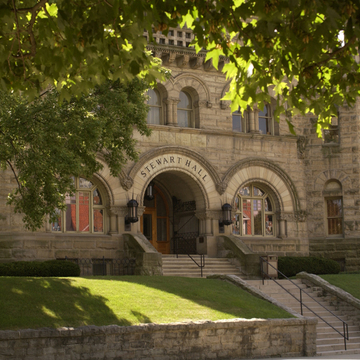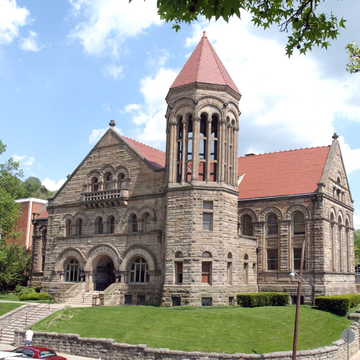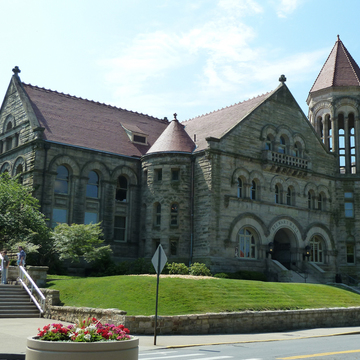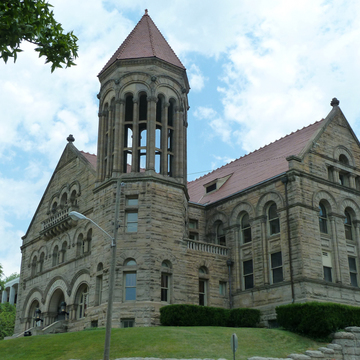In 1899 the university held an architectural competition for three new buildings: one to house shops and drafting room (Mechanical Hall), an armory, and a library. Wilson Brothers and Company, architects from Philadelphia, won. Although all three buildings were erected, only the library (Stewart Hall) remains. One of the state's most impressive Richardsonian Romanesque buildings, it bears comparison with the master's own University of Vermont Library (1883–1885) in Burlington, which it closely resembles.
All the wall surfaces are quarry-faced sandstone, laid in alternating broad and narrow courses. The building's most prominent single feature, a tall octagonal tower with elongated, open arches, projects from the southwest corner. Its prominent roof, like that of the building proper, is covered with bright red tiles. An almost separate hip-roofed wing to the rear originally housed book stacks.
Many interior features, obscured when the building was first converted to administrative offices in 1931, were uncovered and restored in 1979. A structural evaluation revealed that this is one of the state's earliest examples of reinforced concrete construction. In 1992 the exterior was cleaned and restored under auspices of S. E. M. Partners, Inc., of Beckley. The building, named to honor a former university president, continues to house administrative offices.








